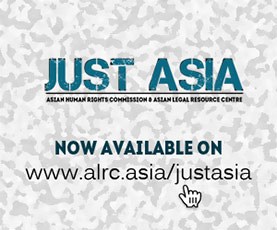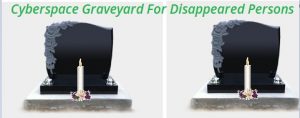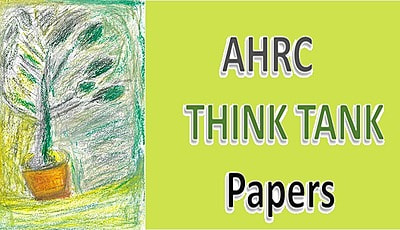SOUTH KOREA: Gwangju, a model of reconciliation
On May 18th, 2010 South Korea celebrated the 30th anniversary of the Gwangju uprising against the military dictatorship of the then President, Mr. Chun Do-Whan. The manner in which the people of Gwangju city, consisting of around 730,000 people at that time, rose up against the military take-over by the President of South Korea in 1980, has very few parallels in history. For about eleven days, the entire population of Gwangju held the city against the military platoons sent by the central government to take over the city. In an interview with The Korea times, Mr. Yoon Kwang-jang, the head of the May 18 Memorial Foundation recalled the incident, thus, “we didn’t have a single accident or crime inside the community. We lacked food, money and manpower but we had happiness, friendship, ideas and heart.” The surrounding military gave an ultimatum for the people to surrender. During this time, there were hundreds of civilians who were guarding the city.
A group of foreign journalists who were at the town at that time interviewed the armed group after the ultimatum was given by the military. This group discussed among themselves the options open to them. They were of the view that if they surrendered, it would have been demoralizing on the people of the city as well as in South Korea as a whole, and the military leaders would use this as propaganda in order to undermine all resistance to military rule. At the same time, they were aware that if they did not surrender the military will enter and forcibly kill the entire group. Facing these two options, their unanimous decision was that it was better to die resisting than to surrender. They knew clearly the implications of their choice to their personal lives. However, they felt that to inspire resistance to the military dictatorship was the only option they had which was the sacrifice of their lives. The military did open fire on the bases on the ultimatum. The result was that 207 people were killed and thousands were wounded.
The military was forced to revisit this event over the long years as the movement for democracy in South Korea kept up the demand for over a decade following the incident. It was in 1993 when the democratic movement won their final victory over the military dictatorship. Mr. Kim Young-sam, one of the leaders of the movement for democracy was elected to take power. In 1997, Mr. Chun Du-whan and Mr. Ro Tae-woo were brought before the Supreme Court of Korea to answer to the charges of rebellion and killings which were done on their orders at Gwangju. In 1998, Mr. Kim Dae-jung who was exiled for a long time was elected to be President of the South Korea.
In 1997, May 18th was declared as the national day and the graveyard which honors those who were killed in Gwangju who was declared a national monument.
Over the long years since 1980, when a strong military dictatorship held over Korea, the Korean democratic movement continuously fought for the displacement of the military dictatorship. This movement demanded not only the restoration of democracy but that the military dictatorship be held accountable for the abuse of power and the murder and violence exercised by the military regimes. Now thirty years after the uprising, the people of Gwangju celebrated the May uprising of 1980 as the most important event in the long struggle for democracy. The demand of the people is that overall measures must be taken in order to avoid any reoccurrence of military dictatorships or the abuse of power.
In 2008, the conservative government came to power in the South Korea again. This government attempted to go back to a policy of undermining human rights, particularly freedom of expression and the functioning of independent institutions for the protection of human rights. Such attempts are meeting with resistance from the people again. In May 2010, people celebrated the Gwangju uprising and there were calls for the recognition of spirit of the uprising. The examples of those who sacrificed their lives in May 1980 for democracy once again rose.
The Gwangju model of reconciliation is, first of all, one of recognizing the need to abandon militarism in its totality. Militarisms claim was that repression was necessary for economic development. However, people rejected this view and elected a democratic government into power and displaced the military influence on political life altogether. The return to democracy meant the dismantling of all the internal security laws and other forms of repression, which were acted out through suspensions of legal protection, and the return to democracy in all areas of governance.
There have been many attempts to document the past abuses and to have them discussed openly throughout South Korea. Many legal reforms have been demanded including the removal of the executive powers of the prosecutors office. There are also constant demands for stopping the governments interference into the freedom of expression. Of particular importance to the democratic movement in South Korea is the demand for the removal of the many kinds of suppression of the media including various attempts by the government to monitor the use of electronic media. People today also want radical reforms in the administration of justice so that people have easy access to the law.
Above all, there is a demand from the victims for recognition of the rights of the victims including rehabilitation and reparation. The victims of the Gwangju uprising are one of the most organized sectors in the city of Gwangju. The victims are at the forefront of the struggle demanding no return to the past practices of repression. The victims family organized events to bring victims from other parts of Asia with a view to improve solidarity among the victims throughout Asia.
The continuous movements in South Korea in all areas of life such as intellectual life, cultural life and in political life, constantly bring up the issue of the 1980 uprising and the protest against the repression. It is the comprehensive model of reconciliation that needs to be studied in other countries which are struggling to deal with the past practices of repression in their own societies.



